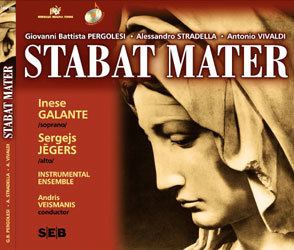Original language Latin | ||
 | ||
Similar Gradual, Redemptoris Mater, Roman Missal, The lauds | ||
Jacopone da todi xiii sec stabat mater giovanni vianini milano it
The Stabat Mater is a 13th-century Catholic hymn to Mary, which portrays her suffering as Jesus Christ's mother during his crucifixion. Its author may be either the Franciscan friar Jacopone da Todi or Pope Innocent III. The title comes from its first line, Stabat Mater dolorosa, which means "the sorrowful mother was standing".
Contents
- Jacopone da todi xiii sec stabat mater giovanni vianini milano it
- Stabat mater testo latino e traduzione italiana latin lyrics and italian translation
- Date
- Text and translation
- Musical settings
- References
The hymn is sung at the liturgy on the memorial of Our Lady of Sorrows. The Stabat Mater has been set to music by many Western composers, most famously by Palestrina (~1590), Vivaldi (1712), Domenico (1715) and Alessandro Scarlatti (1723), Pergolesi (1736), Joseph Haydn (1767), Rossini (1831-42), Dvořák (1876–77), Verdi (1896-97), Karol Szymanowski (1925–26), Poulenc (1950) and Arvo Pärt (1985).
Stabat mater testo latino e traduzione italiana latin lyrics and italian translation
Date
The Stabat mater is generally ascribed to Jacopone da Todi (ca. 1230-1306).
The Stabat Mater was well known by the end of the 14th century and Georgius Stella wrote of its use in 1388, while other historians note its use later in the same century. In Provence, about 1399, it was used during the nine days processions.
As a liturgical sequence, the Stabat Mater was suppressed, along with hundreds of other sequences, by the Council of Trent, but restored to the missal by Pope Benedict XIII in 1727 for the Feast of the Seven Dolours of the Blessed Virgin Mary.
Text and translation
The following translation by Edward Caswall is not word-for-word. Instead it has been adapted so as to represent the meter (trochaic tetrameter), rhyme scheme, and sense of the original text.
Musical settings
Notable composers who have written settings of the Stabat Mater include:
Franz Schubert composed two settings of the sequence, the G minor setting and the F minor setting.
Others, not listed above, include: Vavox & Andreas Scholl by Vavox, October 14, 2015
Most of the settings are in Latin, but Karol Szymanowski's and Paul Bebenek's are in Polish, although Szymanowski's may also be sung in Latin. George Oldroyd's setting is in Latin but includes an English translation for Anglican/Episcopalian use. The Alfeyev setting is in Russian.
